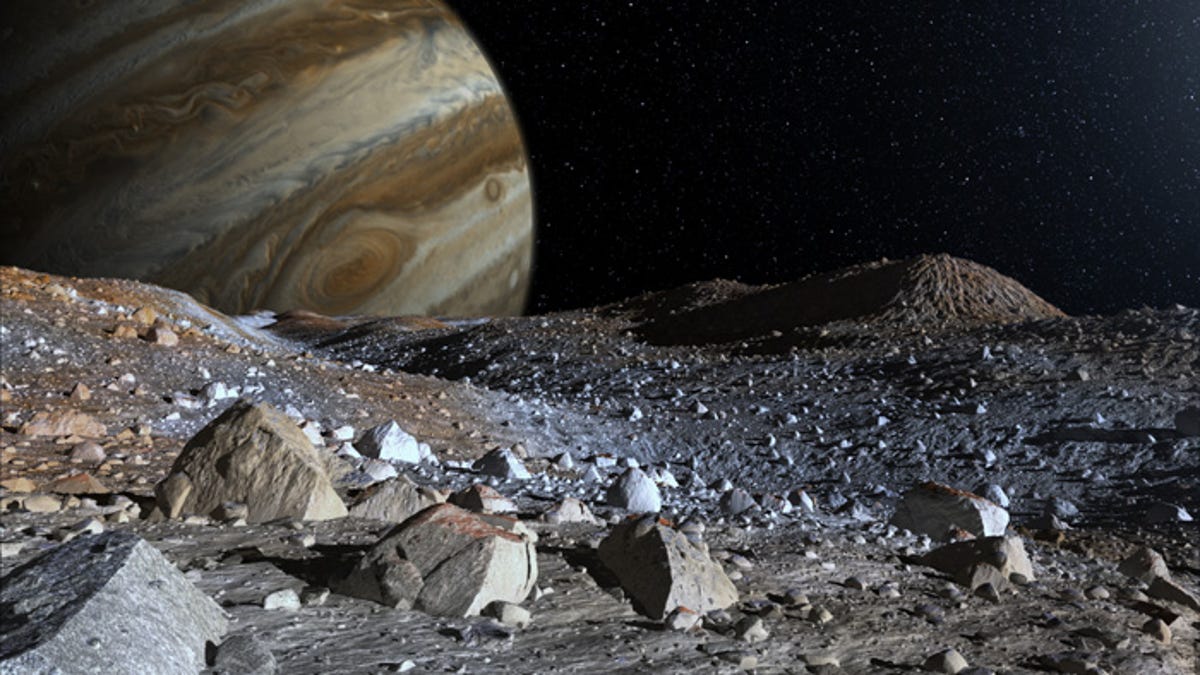Traces of life on Europa might be found by scratching the surface
An icy shell miles thick hides a liquid ocean on the moon of Jupiter where alien organisms might lurk. But signs of such life might be closer to the surface.

An artist's rendition of the view from Europa's frozen surface.
Jupiter's moon Europa hides a liquid ocean, and perhaps life, beneath a shell of ice around 20 kilometers (12.4 miles) thick, but it might be possible to check for signs of alien biology without having to drill into its dark depths.
Getting that kind of a drilling rig to the outer solar system is a pretty tall order. It would be much easier to send a lander to Europa to scour the surface for traces of organisms that may have worked their way up from their watery habitat to the surface of the ice shell.
The only problem with this idea is that the surface of Europa is blasted with an awful lot of sterilizing radiation that would probably destroy most traces of life.
But new research published online Monday in the journal Nature Astronomy suggests that just scratching the surface of Europa's frozen shell, and in just the right spot, might yield evidence of life forms that once existed or perhaps still live there.
Specifically, the study led by NASA's Tom Nordheim finds that amino acids, which are the building blocks for proteins in living organisms, could persist just 1 to 3 centimeters below the surface of Europa at higher latitudes that receive less radiation.
"Amino acids are not strictly a sign of life but they could serve as one of the simplest molecules that qualifies as a potential biosignature," the paper reads. "These results indicate that future missions to Europa's surface do not need to excavate material to great depths to... search for potential biosignatures."
While it might not be as exciting as going beneath the ice and encountering alien squid, as in the underrated sci-fi flick "Europa Report," it could be an important start.
Both NASA and Elon Musk already have ambitions to send spacecraft to Europa. If a lander were to find biological material just below the surface, a follow-up mission just might include a massive drill and a submarine.
Even a fly-by of Europa, like NASA's planned Europa Clipper mission, could help identify the ideal landing spot to look for those shallowly hidden biosignatures and also locate thin spots in the moon's icy shell should we want to dig deeper at some point.
Technically Literate: Original works of short fiction with unique perspectives on tech, exclusively on CNET.
Crowd Control: A crowdsourced science fiction novel written by CNET readers.

